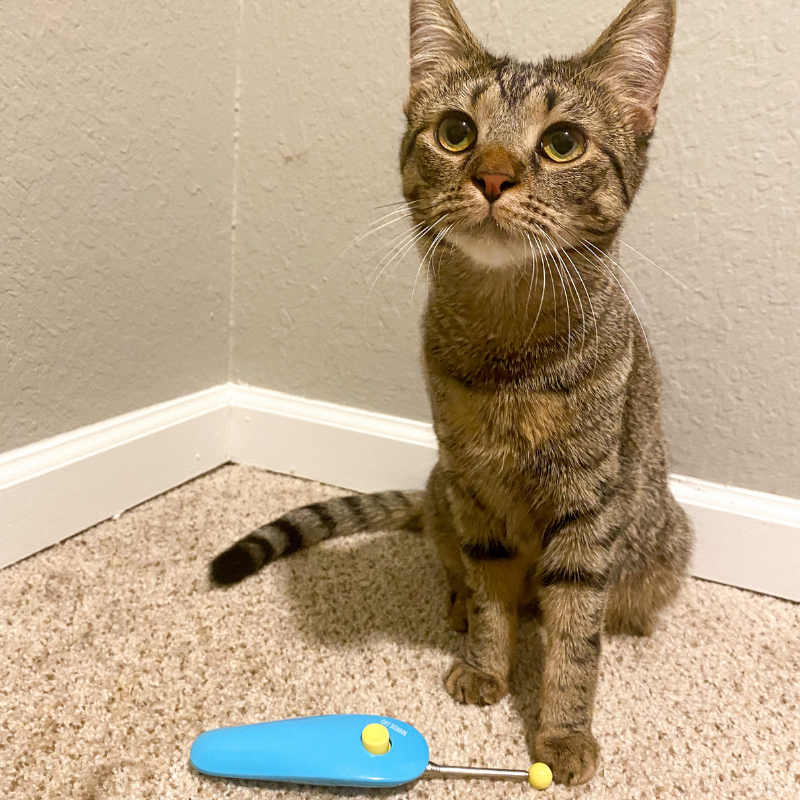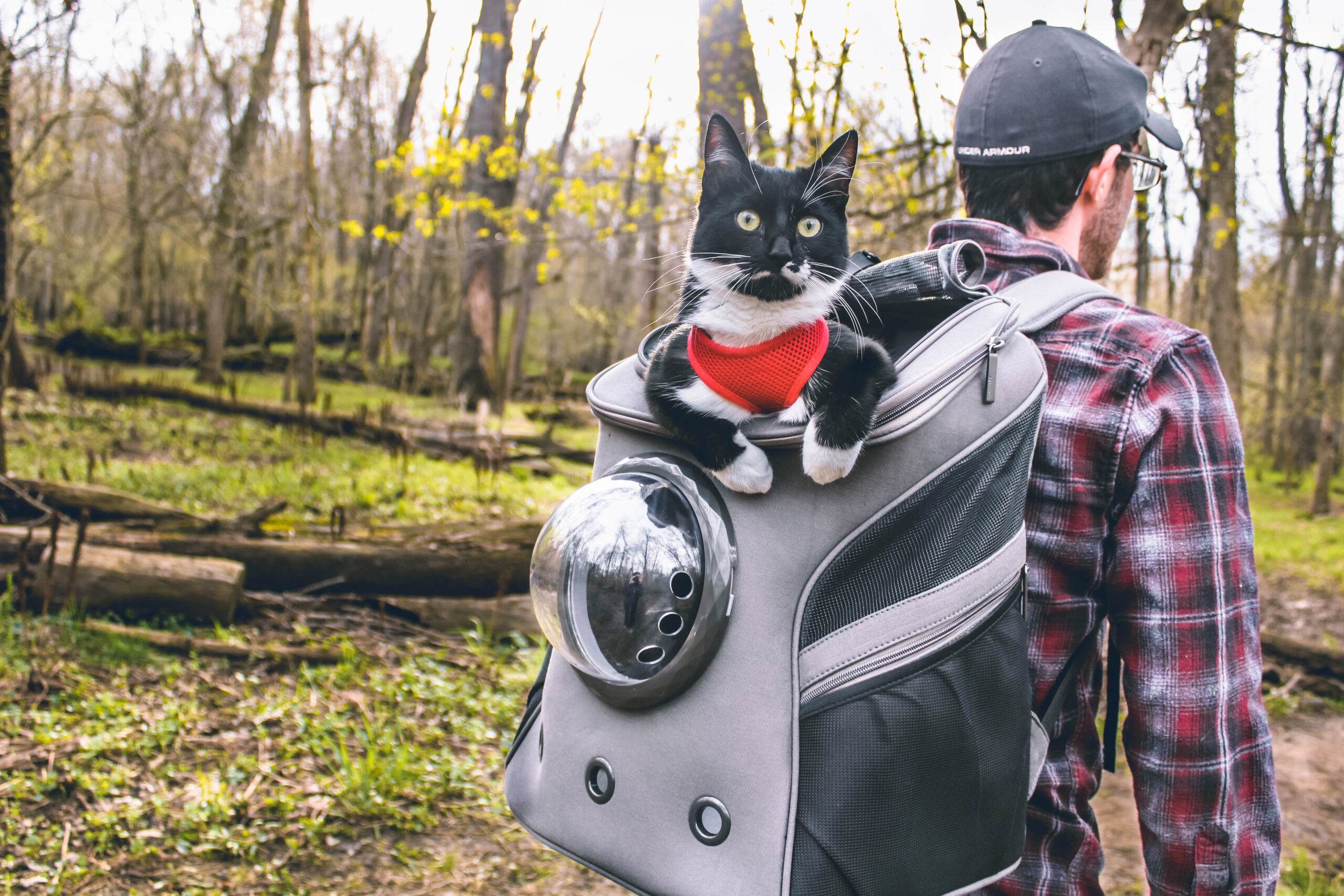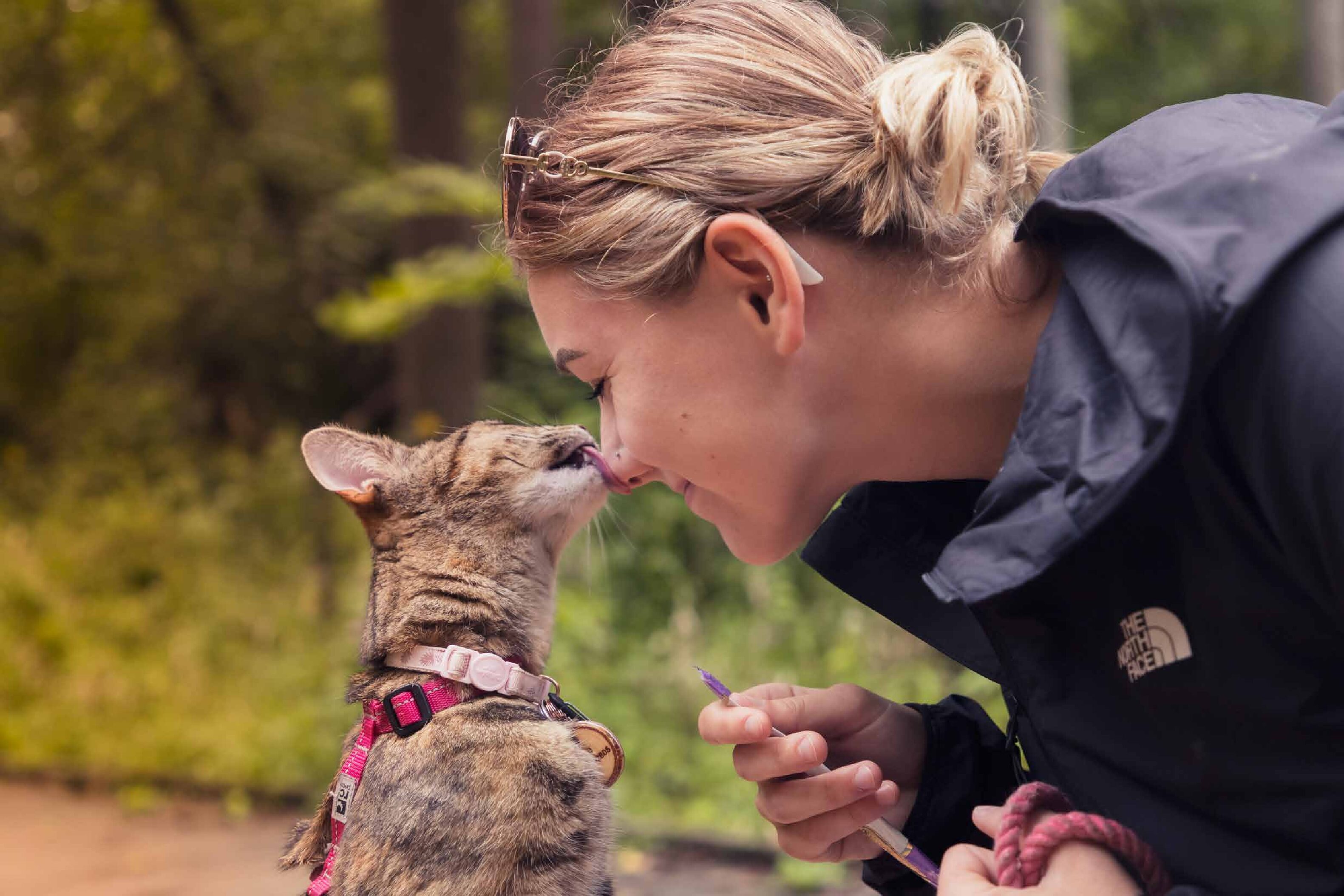
How To Start Clicker Training With Your Cat
Have you heard that cats are not trainable? That cats cannot be trained to do tricks or desired behaviors like dogs can? Ever wonder what leads people to think this? One reason is that cats and dogs respond differently to the same training techniques. Training gives the best outcome when an individualized approach is used. So, what training techniques allow you to individualize your training? Clicker training and positive reinforcement!
What Is Clicker Training?
It has been shown that cats respond well to clicker training and positive reinforcement. This is done by catching your cat in the act of doing something you like and rewarding them for it. Cats respond better to being praised for doing the right things, rather than being punished for doing the wrong things. With clicker training, it is easy to customize your training plan and prioritize the goals you want individually for every cat. Everyone can focus on the specific things they want to work on with their cat.
Clickers can be found at pet stores, online, or as a mobile app. Some clickers can be purchased with a training course or guide, such as at Cat School, but there are many other options as well.
Why Should You Try Clicker Training?
For adventure cats, clicker training can be a great way to keep your cat safe on the trails. You can teach them to come, stay, jump up onto the backpack, jump into your arms, and more. This can be very valuable outside when encountering situations that may startle your cat. It will help give you peace of mind knowing that your cat trusts you and will respond to you if unexpected situations occur.
Clicker training also gives your cat mental stimulation. This can tire them out just as much as an adventure outdoors! It requires them to be focused and think to figure out what it is they are being asked to do, exercising their minds.
Working on these tricks can be a way to increase your cat’s trust in you and strengthen your bond. It helps establish a “language” between you and your cat, so you can better understand each other. This can also be extremely helpful when outside, knowing that not only you can trust your cat, but that they trust you too.
If your cat is doing things you want to train them not to, you can use clicker training to change it. For example, couch scratching. First, you want to make the couch a less desirable place to scratch. You can do this with whatever method works with your cat, maybe double-sided sticky tape. A spray bottle is NOT recommended, as this is negative reinforcement. Second, you want to have an appropriate spot for them to scratch, like a scratching post. Whenever your cat scratches on the couch, pick them up and bring them to the scratching post. When they start scratching that, click and reward them. This will help your cat associate the scratching post as a good place to scratch, as they get rewarded there. Consistency is key here! It will take time. This can also work for other behaviors, like counter jumping.
Aside from training practical commands, you can also teach them fun tricks! They can learn all sorts of tricks, and again, it can be so easily customizable! There are loads of YouTube videos and other resources you can check out to give you some fun trick ideas!
What Will You Need?
- A clicker
- You can also download an app that makes the clicker sound
- Clicking a pen could work too, as well as making the clicking noise yourself
- A target stick (or any pointer stick)
- A highly desirable treat
- Try to get healthy ones if you will be training a lot. Low calorie, single ingredient treats are great! However, you want to make sure it is a treat that your cat really likes. If they do not care for the treat, they will be less motivated to train.
- Patience and consistency!
- When doing anything with cats, these two things are key, and clicker training is no exception.
How To Start Clicker Training?
First, you will need to teach your cat that the sound of the clicker means they get a treat. This is called “charging the clicker”. You can do this by simply getting your cats attention, click right away, and give them the treat. It is so that when you start teaching commands, that your cat knows when you click, they did the right thing and will get a treat. Some cats learn this very quickly, as others may take some time. But that is the beauty of clicker training! Every cat works at their own pace and can individualize their training.
Our Top Tips For Clicker Training:
- Keep training sessions short, only a couple of minutes. If the sessions are too long, your cat may lose interest. It is better to do multiple short sessions daily, rather than one long session daily. If you notice your cat is losing interest, it is best to stop for that session.
- Try to click at the moment your cat does the desired behavior. If you click too early or too late, they may get confused in what it is they are supposed to be doing.
- Practice using hand motions and voice commands. This can eventually lead to you not needing the clicker to get your cat to do the desired trick.
- If you have a more complicated trick, do not be afraid to split it up into steps. For example, if you want your cat to jump onto the backpack when you are wearing it, start with leaving the backpack on the floor and having them jump onto it. You can slowly increase the height, have them jump from different surfaces, etc. to help them learn the behavior in any situation.
Common Mistakes Made:
- One click = one treat. Do not click after every trick if you are doing a sequence of tricks. If you are asking your cat to do multiple tricks in a row, but only giving the treat after they are all done, only click once all the tricks are done.
- Do not push/move your cat to the desired spot or position. This can actually make your cat more hesitant to do what you are asking. All of the movements your cat makes should be voluntary.
- Not using a desirable enough treat. Try to find a treat that your cat really enjoys, and do not give it to them at any other times other than when clicker training.
- Training at the wrong times. If you cat is not hungry, it may not care for the treats at that time. Try to plan clicker training before mealtimes for your cat, If your cat just was outside or played with, they may be too tired to train. Make sure you are not overstimulating your cat to exhaustion.
- Giving up too soon. If your cat is not understanding what you are asking, try breaking it down into simpler tasks that they do get. If you are getting frustrated, it is time to stop. You do not want any negative associations with the clicker. And remember, cats need patience and consistency to learn things. It will take time. Just because your cat does not understand what you are asking them to do for a few weeks, does not mean they aren’t close to getting it! Keep at it!
Conclusion
Cats are trainable, despite what some people may think. After much research and behavior studying, experts have found clicker training to be the most successful way to train cats. There are so many options available for training, and you really do not need much to get started. You can individualize your cat’s training plan, from practical commands, behavioral modifications, or just wanting to learn fun tricks! It can all be done using the same tools and methods. We clicker train our own cats, and it has been very successful. It is especially great for our outdoor adventures, so we definitely recommend looking into it
You May Also Like

HOW TO FIND THE RIGHT BACKPACK FOR YOU AND YOUR CAT
June 12, 2020
WHAT PLANTS TO AVOID WITH YOUR CAT
July 31, 2020


